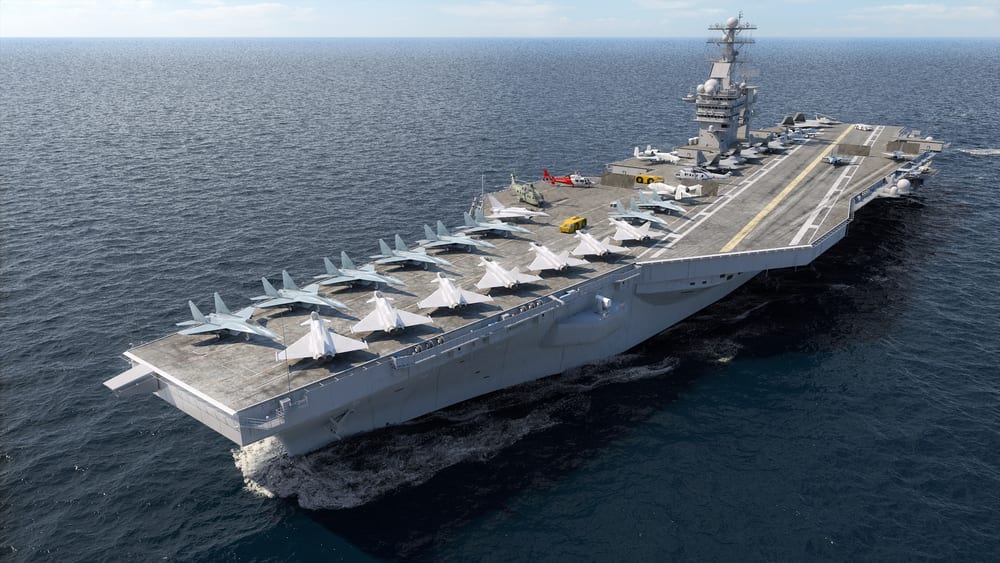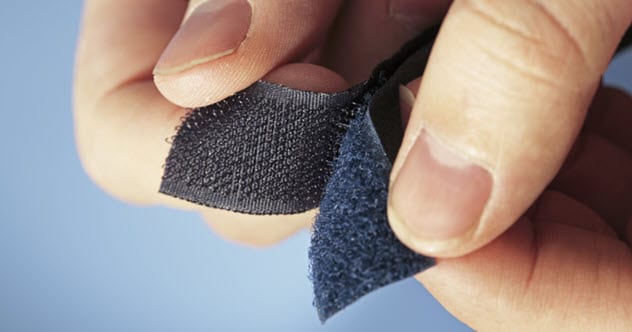 History
History  History
History  Animals
Animals Ten Times It Rained Animals (Yes, Animals)
 Mysteries
Mysteries 10 Devastating Missing Child Cases That Remain Unsolved
 Creepy
Creepy 10 Scary Tales from the Middle Ages That’ll Keep You up at Night
 Humans
Humans 10 One-of-a-kind People the World Said Goodbye to in July 2024
 Movies and TV
Movies and TV 10 Holiday Movies Released at Odd Times of the Year
 Politics
Politics 10 Countries Where Religion and Politics Are Inseparable
 Weird Stuff
Weird Stuff 10 Freaky Times When Famous Body Parts Were Stolen
 Miscellaneous
Miscellaneous 10 Interesting Things Manufacturers Stopped Making and Why
 Gaming
Gaming 10 Funny Tutorials in Games
 History
History 10 Desperate Last Stands That Ended in Victory
 Animals
Animals Ten Times It Rained Animals (Yes, Animals)
 Mysteries
Mysteries 10 Devastating Missing Child Cases That Remain Unsolved
Who's Behind Listverse?

Jamie Frater
Head Editor
Jamie founded Listverse due to an insatiable desire to share fascinating, obscure, and bizarre facts. He has been a guest speaker on numerous national radio and television stations and is a five time published author.
More About Us Creepy
Creepy 10 Scary Tales from the Middle Ages That’ll Keep You up at Night
 Humans
Humans 10 One-of-a-kind People the World Said Goodbye to in July 2024
 Movies and TV
Movies and TV 10 Holiday Movies Released at Odd Times of the Year
 Politics
Politics 10 Countries Where Religion and Politics Are Inseparable
 Weird Stuff
Weird Stuff 10 Freaky Times When Famous Body Parts Were Stolen
 Miscellaneous
Miscellaneous 10 Interesting Things Manufacturers Stopped Making and Why
 Gaming
Gaming 10 Funny Tutorials in Games
Top 10 Low Tech Solutions To High Tech Problems
Many people believe high-tech problems require high-tech solutions. It’s not quite so. Complex technologies sometimes require simple, low-tech solutions that may cost next to nothing.
Cheap here doesn’t mean inferior since these solutions are often better than the more expensive, high-tech solutions. This list is evidence that the KISS (Keep It Simple, Stupid) principle is sometimes the best way to go. As the principle states, most things work best when they are kept simple.
10 Ways Technology Is Changing You For The Worse
10 Ostrich feathers and carmakers

Carmakers put a lot of effort into ensuring your new vehicle rolls out of their factories with a spotless paintjob. That’s why they heavily invest in state of the art equipment like high-tech painting stations, industrial robots and ostrich feathers. Did we just say ostrich feathers? Yes, female ostrich feathers actually.
The smallest dust particle can destroy the best paintjob and no one knows that better than carmakers. This is why they demarcate their painting departments from the main factory. They even blast workers and visitors to the painting departments with air to remove dust and loose fiber that may be hanging on their clothes.
However, that isn’t enough since minute dust particles still find their way in and stick on vehicles awaiting painting. Carmakers get rid of these particles by running the vehicles through giant dusters made out of female ostrich feathers right before painting.[1]
9 Mirrors and elevators

Early elevators did not have mirrors. Manufacturers only added mirrors because they did not want to invest their time, effort and money into making faster elevators.
It all began several decades ago, at a time when elevators were still a new invention. Users often complained the elevators were too slow. Most elevator manufacturers returned to the drawing board to design faster elevators, which was expensive. However, one company decided to do things a bit differently.
It conducted a research and discovered most users thought elevators were slower than they really were. People only complained because they had nothing to do other than stare at the walls of the elevators while thinking about the many bad things that could happen if the cables snapped and the elevator fell to the ground.
The elevator company concluded they needed a way to distract people. They added mirrors so people could think about their appearance while in elevators. Users instantly lost track of time and now thought elevators were faster than they were.[2]
8 Angled runways and aircraft carriers

If you’ve seen an overhead photo of a modern aircraft carrier or even seen one up-close, you will notice the runway is always angled and never straight. This contrasts with the World War II era aircraft carriers that had straight runways. Why is this so?
This has everything to do with the invention of the jet engine. World War II era carriers carried propeller-driven airplanes, which required shorter runways to take-off and land. This meant the carriers could launch and recover airplanes simultaneously. However, this changed when jet powered airplanes came along.
Jet engines require longer runways for take-off or landing. This meant the carriers were either launching or recovering airplanes and couldn’t do both at the same time. On top of that, landing jets that missed the arresting wire (which helps in rapidly decelerating a landing airplane) would not have enough runway space to taxi and take-off to attempt another landing.
One solution to these problems was to build larger aircraft carriers with longer runways. This suggestion was cast aside because it did not solve all the aforementioned problems. A second suggestion was to leave landing airplanes hovering above the carrier while other airplanes took off. However, this too was abandoned because jets do not carry enough fuel.
The third option was to tilt the runways on existing carriers to maximize runway space. The angled runways were longer and solved every issue the navy had with shorter airways.[3]
7 Playstation 3 consoles and supercomputers

A few years ago, the US Air Force used 1,760 Sony Playstation 3 consoles to build the most powerful supercomputer in the US Department of Defense and the 33rd most powerful supercomputer in the world.
The supercomputer was so powerful that it could perform 500 million mathematical operations in one second and analyze over a billion pixels in one minute. The Air Force used it to process high-resolution satellite images, identify unclear objects in space and research into artificial intelligence.
A Playstation 3 cost $400 apiece at the time the air force built the supercomputer while a similar part from a “real computer” cost around $10,000. This put the cost of the entire project at $2 million, which is between 5-10% the price of a regular supercomputer of similar capability.[4]
6 Xbox 360 controllers and nuclear submarines

A periscope is one of the defining features of a submarine. It’s that tube-like instrument submariners use to see above water while submerged. Periscopes have seen an upgrade of late and have evolved from the traditional tube-like pole with 45-degree mirrors into high-resolution cameras that can see 360 degrees above the submarine.
The US Navy uses these modern periscopes in its latest Virginia-class nuclear powered submarines. However, this high-tech equipment has the most low-tech controls ever, the Xbox 360 controller.
The use of Xbox controllers in US Navy submarines is a recent development. Until a few years ago, the navy controlled its digital periscopes with $38,000 joysticks. It only swapped them for Xbox controllers after junior officers complained the joysticks were huge, heavy and required extensive training.
Xbox 360 controllers on the other hand, cost around $39.95 apiece. They’re light, easy to use and do not require extensive training. They’re also easy to replace since they can be purchased from the nearest game store.[5]
10 Dangerous Misconceptions About Nuclear Technology
5 VELCRO and NASA

The absence of gravity is one of the most obvious problems NASA encountered in the early days of space travel. As we all know, gravity is the reason everything stays on the ground. In a weightless environment like space, anything that isn’t secured to the ground or walls will just keep floating around.
NASA needed a way to keep tools and equipment from floating around without necessarily bolting them to the ground or wall. So it turned to VELCRO, the inventor of hook-and-loop fasteners and both worked together to perfect a hook-and-loop fastener that will not only keep stuff from floating around but will also survive the extreme environment of space.
NASA uses lots of VELCRO in its projects. It even added them to spacesuit helmets so that astronauts can scratch their noses while spacewalking. Little wonder many people erroneously think NASA invented hook-and-loop fasteners. NASA did not invent hook-and-loop fasteners but as it said about VELCRO in 1969, “We couldn’t fly without it”.[6]
4 Rats and landmines

Landmines are a huge problem in former warzones. Considering they only explode when someone or something steps on them, they can remain active for decades, even long after the war is over. Every year, thousands of people lose their lives after stepping on forgotten landmines.
Finding and deactivating these landmines is a very difficult and dangerous job, even with bomb detection equipment. Some organizations replace the bomb detection equipment with bomb detection dogs but these dogs are often expensive to transport and complicated to use.
In 1997, an anti-landmine NGO called APOPO stepped in with a cheaper and better solution, rats. These aren’t your regular subway rats but the African giant pouched rat, which are as large as cats. The rats have terrible eyesight but excellent sense of smell, which they use to detect the TNT in the landmines.
African giant pouched rats are faster and better than humans and dogs. A rat will cover 2,000 square feet in just 20 minutes. A human equipped with bomb detectors will cover the same distance in four days. The rats are also light enough to walk over landmines without triggering them. APOPO’s rats have detected over 13,200 landmines in several countries so far.[7]
3 A $10 domain name and WannaCry

A few years ago, the world experienced one of the worst ransomware attacks ever seen. WannaCry as it was called, infected over 300,000 computers in 150 countries. The virus locked owners out of their computers and instructed them to pay hundreds of dollars in Bitcoin as ransom.
WannaCry continued ravaging the world until a man identified as Malwaretech bought a domain name. Domain names are not expensive. They cost around $10 on average. However, that simple action was enough to render WannaCry docile. It instantly stopped spreading and removed itself from every computer it had infected. How did this happen?
This happened because Malwaretech exploited the same thing that made WannaCry successful. Unlike regular viruses, ransomwares always maintain a communication channel that links the attacker to the victim. While this may sound dumb, the attacker actually needs this channel to send payment information to their victims, collect ransoms and unlock their computers after payment.
However, this communication channel works both ways because law enforcement agencies could use it to track the attackers. Attackers counter this by building kill switches into their virus. This allows them to shut down their viruses the moment they suspect they’re being tracked.
For WannaCry, that kill switch was a domain name. The attackers programmed the virus to check the internet for an unregistered domain name at intervals. The virus would continue spreading if the domain remained unregistered but will instantly stop the moment it was registered. Malwaretech found that kill switch and registered the domain name, stopping the virus.[8]
2 Speed tape and airplanes

We all know airplanes require regular maintenance since pilots cannot park on the nearest cloud whenever they run into issues. However, maintenance is a big word here since it could refer to something as basic as holding the airplane together with speed tape.
Think of speed tape as the duct tape for airplanes. Like duct tape, they can fix everything even though aviation authorities limit them to holding noncritical parts of the airplane together. They’re considered a temporary solution and the fault will be usually sorted out the next time the airplane goes into maintenance.
Speed tape costs a few hundreds to thousands of dollars. While that may seem expensive, it is cheaper when compared to the thousands or even millions of dollars airlines will lose if airplanes were taken out of service every time they have issues.[9]
1 iPhones and the US Army Special Operations Command

The US Army Special Operations Command uses many specialized mobile apps during top military operations. However, instead of developing expensive devices to handle those apps, they turned to a cheaper alternative, iPhones.
While we do not know what the majority of these apps do, we know of one that uses the split screen feature of the iPhone. The operator sees a live footage shot from a flying Unmanned Aerial Vehicle on one part of the screen and a map showing the route taken by the UAV on the other.
A Business Insider report revealed the army previously used Android-powered Samsung Galaxy Note smartphones before switching to the iPhone 6s. The switch was necessary because the apps often froze on Samsung, constantly requiring the operators to restart the device. On top of that, the iPhone 6s also had better screen resolution, which made photos and videos sharper.
Before this turns into another Samsung-iPhone, Android-iOS or Google-Apple war, we should add that the Department of Defense pitched the older Samsung phones it was using at the time against the newer iPhone 6s during tests.[10]
10 Pieces Of Technology That Won’t Exist In 20 Years








